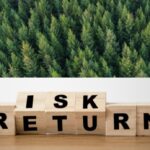Recently, a reader raised questions regarding the complexity of forest investment financial modelling after my most recent article on bankable NBS projects. Simultaneously I happened upon a white paper written on the topic of The Real Cost of Restoring Forests by the Trillion Trees Initiative. Clearly a relevant discussion, for this article I provide my thoughts on the paper and add my reflections from an investment perspective – as the paper focuses more on non-commercial forest landscape restoration.

The Problem of FLR Accounting based on Cost per Tree
Quite often, investors new to forest landscape restoration investment ask what is the cost of planting a tree?. They are entering the space, thinking “my organization is going to plant X number of trees”, and simple math would then dictate what this is going to cost them. This question is flawed on so many levels. Firstly, there are so many variables to consider that it is impossible to generalize. Furthermore, even if you can identify all the variables, it still is not the right question to ask.
As the Trillion Trees report quite rightly writes, there should be a “shift to focus on tree growing, as opposed to tree planting”. The challenge with focusing on planting trees is that quite often, this is the easy part. The difficult part (that also needs to be worked into the cost model) is keeping that tree alive.
The report argues that organizations competing to bring down the cost-per-tree-planted results in ineffective ecosystem restoration – tree planting projects that do not deliver lasting benefits for people, nature and climate.
The report urges to look at per hectare costs compared to per tree costs. I strongly agree with this. If we continue looking at numbers of trees, we’ve lost the plot completely on the meaning of forest landscape restoration.
This said, even a per hectare cost is difficult to generalize. Through the paper’s research, they found a massive difference in costs for establishment of $105 to $25,830 per hectare (that’s right, a more than $25K per hectare spread)! Maintenance costs had a somewhat narrower spread, ranging between $167 and $2,421 per hectare. To provide a bit more of an investment flavor to these numbers in the geographies I work in, the AFDB put out a paper in 2019, Towards Large-Scale Commercial Investment in African Forestry that cited ‘all-in’ commercial afforestation costs across the continent since 2000 to be between $4,000 and $6,000 per hectare.
The Carbon Cost of Restoring Forests
Degraded and deforested forests have found a new capital source for their restoration, and what funders are looking for in return for “planting trees” is carbon. These investors will scrutinize a developer’s financial model to extract the carbon price. Basically, a good investment for them is if the project finance needs come in below the carbon price the investor is willing to pay. The report highlights several estimates of the cost of carbon sequestration via forest restoration. For example, restoring Brazilian Atlantic Forest has been estimated at $66/tonne of CO2 sequestered. A Cambodian example that includes the opportunity cost of timber and rubber profits foregone, as well as transaction costs for carbon certification, implementation costs and management costs combined, requires $30-$51/tonne to break even on costs alone. The report also points to a report by the High-Level Commission on Carbon Prices which concludes that prices of at least $50-100 per tonne by 2030 more accurately reflects the true cost of delivering emissions reductions. This is still a far cry from the actual carbon price paid, where the recent Ecosystem Marketplace’ State of Voluntary Carbon Markets 2022 Q3, reports average carbon prices for removals in the forest and land-use space (of which afforestation and reforestation is part) to be $7.90/tonne for the latest reporting period.
Guiding Principles of Forest Landscape Restoration
The Trillion Trees white paper, identifies the items below as key guiding principles on forest landscape restoration.
- Focus on landscapes
- Maintain and enhance natural ecosystems within landscapes
- Engage stakeholders and support participatory governance
- Tailor to the local context using a variety of approaches
- Restore multiple functions for multiple benefits
- Manage adaptively for long-term resilience
Though commercial viability could be seen to sneak in under “restore multiple functions for multiple benefits”, I believe it requires its own principle. A truly long-term, thriving and resilient forest landscape (where people interact with such forest) will require it to provide economic benefits. All you need to do is look at the variance in the carbon cost to restore a forest and the carbon price being paid to see how this is not a sustainable model. Somewhere, these forests need to generate additional value on the balance sheet, or how will one “manage adaptively for long-term resilience” after the forest landscape restoration funds run dry?
5 Cost Considerations for Forest Landscape Restoration
After describing the principles and best practices of forest landscape restoration, the white paper identifies different cost elements that should be accounted for in an FLR budget, above and beyond the cost of a tree. These are described below.
- Planning: Clearly defining the project objectives and intervention strategies.
- Enabling local participation and privilege local knowledge
- Incorporating different interventions within the same landscape.
- Site preparation and ongoing maintenance.
- Monitoring outcomes, assessing progress and developing local capacity.
The Missing Elements of a Cost-based FLR budget
I do agree with the cost considerations indicated above, and in fairness to the authors, this is not a FLR balance sheet paper – it aims to identify costs. However, I think the discussion could be enriched through addressing more than activity costs.
The paper argues for restoring forest landscapes so that they are resilient over the long-term. Given these forests are degraded in the first place, indicates that they are subject to human pressure, and not situated in some remote location, devoid of human competition for its resources. What I’m getting at is, forests are most commonly degraded or deforested to meet human economic needs, whether these are subsistence based, or more commercial. If we only look at the costs of the activities to plant, manage and grow the trees – we are missing a huge piece of the puzzle – the financial value of this restored landscape – the economic importance to its beneficiaries. Sure, it might cost $5,000 per hectare to restore a forest – but at the end of the day, what is the per hectare value of that forest?
So yes, we must look at the value – this is most easily accomplished through incorporating quantifiable data from traditional markets, such as wood prices and now carbon prices. And if we’re going to attract more savvy investors, we will need to go beyond operational costs (those suggested in the article are essentially operational costs), and even beyond revenues, to include elements such as discount rates, currency, taxes, inflation and CAPEX depreciation. And we need to combine this all together to get a clear picture on cashflow and profitability.
If we continue to view forest landscape restoration as a set of activities that costs a certain amount, I’m afraid we will continue down the traditional donor-model rabbit hole – where those activities only last as long as the donor funding. We need long-term, self-sustaining business models for these restoration efforts to become truly resilient, especially in developing geographies where the policies and legislation that could support long-term resilience are absent. Thus, we need investment capital, and to mobilize this, we need more information than just costs.
Are you Stuck with your Forest Landscape Restoration Balance Sheet?
If you are an investor and need support in assessing the completeness of a financial model for a forest landscape restoration project you are evaluating, or you are a project developer looking to ensure you’ve covered all the critical elements in your financial model – please reach out. I’m offering a 2-hour deep dive call to review your model. Contact me to learn more.




